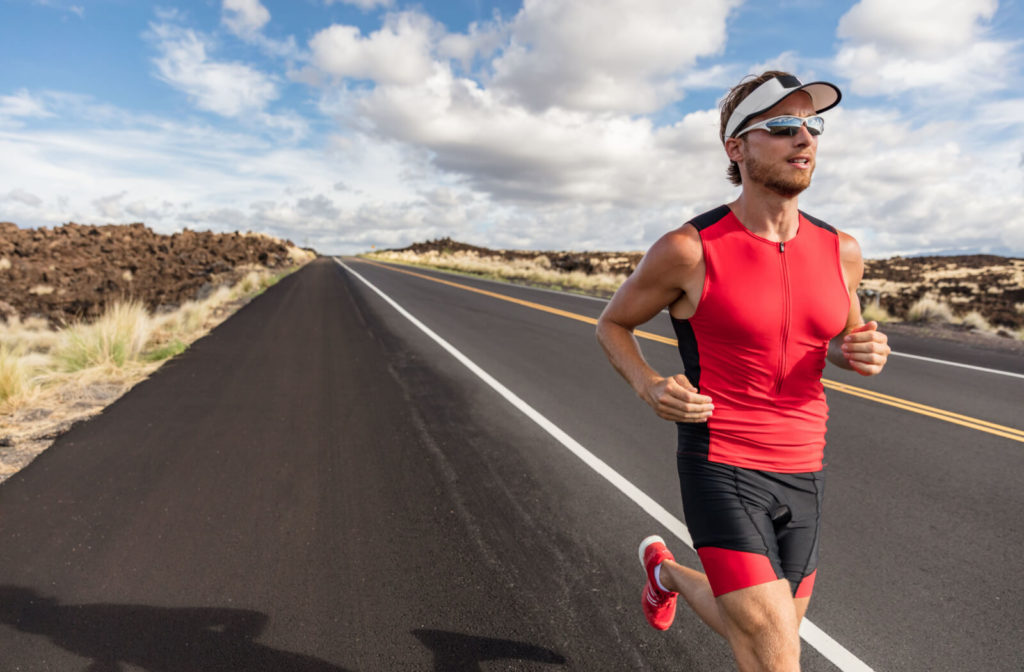As a parent, you prioritize your family’s health and well-being. You probably already know the importance of regular eye exams for maintaining good health, but have you considered the connection between vision and sports performance?
Vision is about more than how well you can see. When it comes to sports performance, the ability to effectively process information, track movement, and use your eyes together is a game changer.
Eye exams not only detect potential problems with clear vision but can also assess these vital skills and how they relate to your child’s development. Best of all, you may be able to help your kid get the most out of their time on the court or field through treatments such as vision therapy.
The Difference Between Sight & Vision
While many people use them interchangeably, sight and vision are different functions. Sight refers to the ability to see things clearly, while vision is a complex process involving how the brain and the eyes communicate.
It may sound complicated but think of it this way: an athlete with 20/20 vision could still struggle with eye-hand coordination and eye teaming. It doesn’t matter how clearly you can see if your brain has trouble telling your eyes how to follow your target.
These visual skills work together to create a complete picture of your environment. As a result, they’re vital not only to sports but also to overall learning and reading. Specialists have identified 17 visual skills in addition to clear vision! These include eye movement control, eye teaming, depth perception, visual memory, and many more.
Visual Skills & Sports Performance
Good vision plays a vital role in processing your environment and making quick decisions. For example, in baseball, a fastball travels from the pitcher to home plate in half a second! Reacting to this object that’s the size of your fist and moves as fast as you can snap your fingers requires incredible focus and visual acuity. As such, an athlete with superior visual skills may have an advantage over those without.
Some visual skills essential for sports performance include:
- Dynamic visual acuity: The ability to clearly see an object in motion
- Visual concentration: The ability to focus on a single object without being distracted
- Eye tracking: The ability to follow a moving object like a ball
- Eye-hand-body coordination: Directing your hands or body using your eyes
- Visual memory: The ability to remember things you’ve seen only briefly
- Peripheral vision: The ability to see things in the corner of your eye
- Visual reaction time: The ability to react quickly to something you see
- Depth perception: The ability to judge an object’s speed and distance
Vision Therapy for Sports
Some people may have difficulty processing visual information, even with glasses or contact lenses. No matter what sports you play, you must be able to judge distances properly and track moving objects. If someone has trouble with skills like that or wants to improve them, an optometrist may recommend vision therapy.
Vision therapy is a program of exercises and activities designed to improve visual processing, eye teaming, and focusing skills. This method isn’t for strengthening eye muscles because, often, your muscles are strong enough. Instead, vision therapy retrains your brain to use your existing skills better.
It’s a drug-free and noninvasive treatment offered for both children and adults. Therapy programs can, and should be, personalized for everyone’s unique needs and wants. This means evaluating your visual skills and matching them with the sport you want to be successful at.
This process can take time, but you’ll get to have in-office appointments with a knowledgeable team who can show you exercises to do at home. They’ll also track your progress using modern, tech-forward methods that help you get the most out of your time.
Exercise & Your Vision
Better vision can help you or your child become more effective in sports, but the connection goes both ways. Researchers have found that keeping active may help prevent eye diseases such as neovascular glaucoma, age-related macular degeneration, and diabetic retinopathy.
While they aren’t sure exactly how exercise can protect your eye health, it appears that getting at least 150 minutes of moderate aerobic activity a week could prevent an overgrowth of eye blood vessels, staving off several eye conditions.
Supporting Your Family’s Vision Health
The connection between vision and sports performance cannot be overlooked. Whether you’re a young athlete just starting out or a seasoned pro, addressing potential vision problems may help you achieve your full potential as an athlete.
If you or someone in your family is struggling with vision issues, don’t hesitate to contact our knowledgeable team at Perspective Eye Center to learn more about sports vision therapy.



